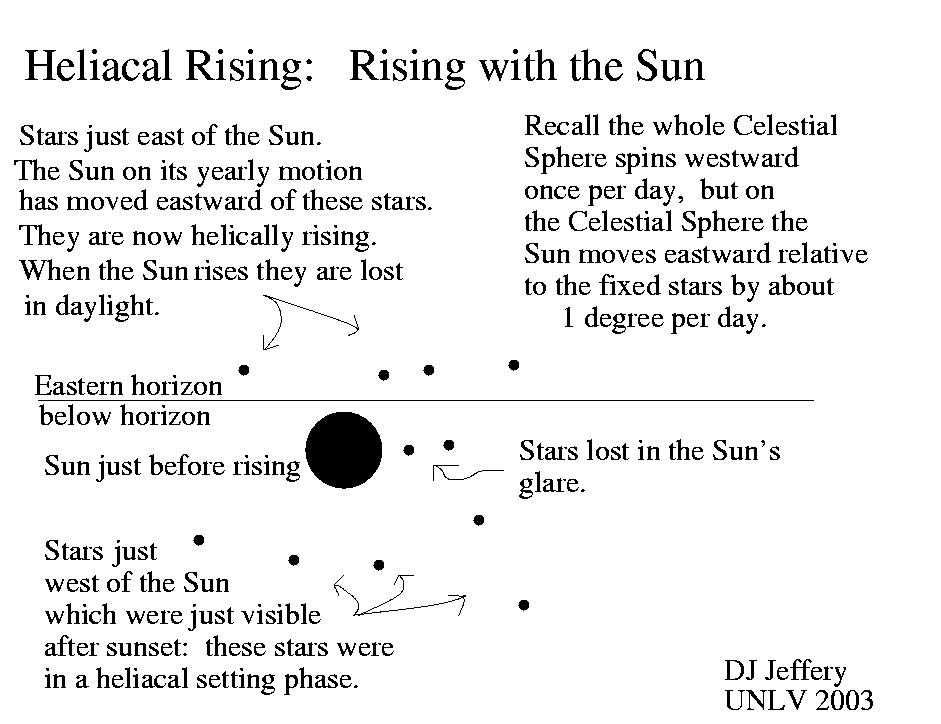
Caption: Heliacal risings explicated and illustrated.
Features:
- Probably precisely because the horizon
provided a measurement tool,
horizon phenomena
(e.g., the risings and settings of the
Sun,
the Moon,
and bright stars
were often of key interest to
prehistoric peoples,
ancient historistoric peoples,
and even later peoples who frequently got up at about
sunrise
because there was light---or to
milk the
cows---they were tied by
lifestyle to
daylight---this is NOT us.
- Among many other things, heliacal risings
of bright star
were often noted since they marked times of the
solar year = 365.2421897 days (J2000).
- Recall, the Sun moves
eastward continually
relative to the stars
by ∼ 1 degree per day
along the ecliptic---and
therefore the stars
move westward relative to the
Sun by ∼ 1 degree per day.
So if a star near the ecliptic is about 1° east of the Sun today, it rises just after the Sun and will usually be invisible to the naked eye lost in the sky brightness due to atmosphere-scattered sunlight: i.e., daylight.
Tomorrow, the star will rise approximately with the Sun---this is its nearly exact heliacal rising.
Heliacal rising just means rising with the Sun
The day after the exact heliacal rising, the star will rise before the Sun and if sufficiently bright can be observed: this is the observable heliacal rising or just the heliacal rising in common parlance.
- Actually, any rising of an
astronomical object
(e.g., a star
or constellation)
near sunrise especially if it is visible to the
naked eye is
usually considered a heliacal rising.
- After its heliacal rising,
an astronomical object
fixed on the celestial sphere
will rise earlier and earlier in the night
until it rises at
sunset---and
then it will rise earlier and earlier in the
daytime
(setting closer and closer to sunset)
until it rises with
sunrise
(and sets near sunset), and
so is back to its heliacal rising phase.
How long is a star NOT visible in most of the night sky because it is up mostly in the daytime? This depends on many factors including how exacting the observer is. Yours truly would guess of order 20 days for a pretty, but NOT extremely, exacting observer.
- Yours truly
mnemonicks
process of the Sun moving
continually eastward
relative to the fixed stars
by reciting mnemonic
"the stars
rise earlier and earlier every day".
-
Mistake alerts for image:
Credit/Permission: © David Jeffery, 2003 / Own work. Image link: Itself.
Local file: local link: heliacal_rising.html.
File: Archaeoastronomy file: heliacal_rising.html.